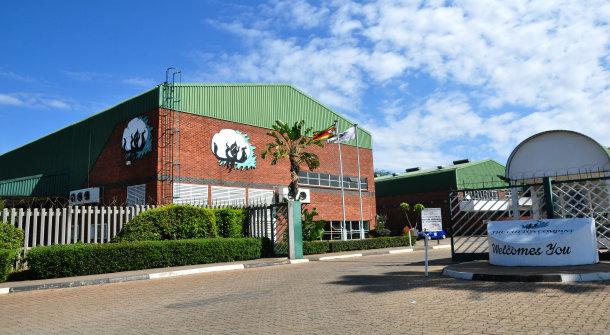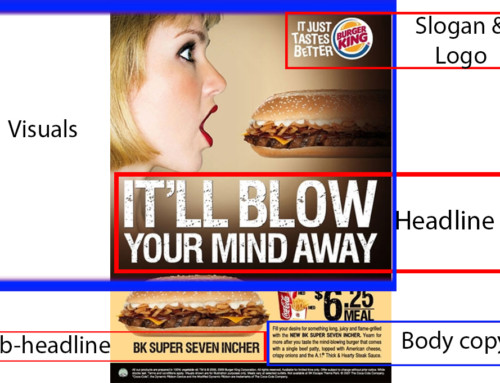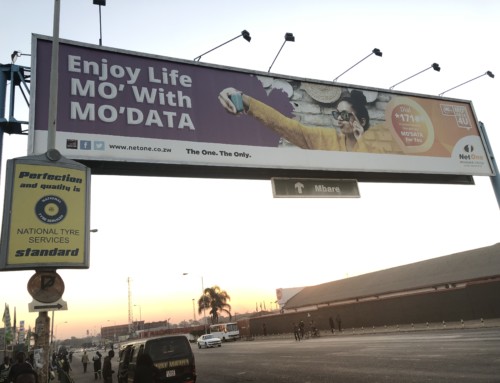Hey guys. In the previous article we talked about Target Marketing. We established that it is important to target specific customers and showed how it would increase your profit margins in 2016. Today we will look at Marketing Planning Systems and how they are critical as a marketing concept. Operating without a marketing planning system is akin to driving at night without headlamps, giving a patient medication without a proper diagnosis or marrying (or getting married to) someone that you do not know. All of the examples that I have given above are suicidal in nature in that you will be operating without knowing where you stand, without knowing where you want to go and without knowing how you will get to the place that you do not know that you want to get to (is what I have just said allowed?). Let us get into it and see how these marketing planning concepts can help you to win your industrial battles in 2016.
This diagram (Marketing Strategy Factors) shows you some of the things that you should consider when you are coming up with your marketing strategy. In this article we are discussing the Marketing Planning System.
Component #3
Marketing Planning System
- Situation Analysis:
A popular idiom goes like ‘Put your best foot forward’. It means that you should be at your best at all times. How then do you know which your best foot is, left or right? You do this by conducting a SWOT analysis and PEST analysis in addition to looking at other factors. This will give you a picture of your company’s strengths, weaknesses, opportunities and threats which will then guide you as to which foot to put forward. We will conduct this exercise imagining that we work at Cottco Holdings Limited. As you know Cottco is under judicial management (Herald, 2015) so we will use hypothetical and accurate information where possible in order to paint that type of picture.
| PEFORMANCE | |
|---|---|
| Revenues | US$ 38 309 000 (Loss of US$ 30 042 000) |
| Market Share | No figure was available. Cottco claims to be Southern Africa's leading cotton buying, processing and marketing group. (Cottco Holdings, 2015) |
| Product and Customer Portfolio | Seed cotton, Agronomy Advisory Services, Chemicals, Fertiliser. Europe, Africa, Asia (Cottco Holdings, 2015) |
| ROI | Information was not readily available so we will put 0.00125 |
Below you will find an example of a SWOT analysis. In this analysis we will give a few examples focusing on the marketing mix since Cottco (claims to be) is the biggest marketer of cotton in Southern Africa.
| SWOT | ||
|---|---|---|
| Marketing Mix Element | Strength | Weakness |
| Product: Quality level; Lowest cost producer; Portfolio/range; Patents etc. | Australia and Egypt produce the best cotton (Wikipedia, 2015) USA and India produce the most cotton at the lowest cost versus quality (Netafam, 2015) |
|
| Price: Appropriate price for the target market; Price versus quality | Competitors like the USA are selling at $0.6089 per pound (Indexmundi, 2015) and Zimbabwe is selling at around $0.72 per pound (Dailynews, 2015) | |
| Place: Distribution penetration - widely available/difficult to get?; Have we got good locations? Have we got distribution to our key target segments? | Cottco is not positioning itself well. The markets that it participates in like Europe and Asia all require that you have a good online presence in order to get leads. Cottco is not set up to operate in such a manner and as a result it probably relies on agents in its target markets. | |
Now that we have touched on the strengths and weaknesses, we will take a look at the opportunities and threats that could apply to Cottco.
| SWOT | ||
|---|---|---|
| Factor | Opportunity | Threat |
| Processing Capacity: Are we producing at optimum levels?; Can we expand production economically? | Cottco as of 2014 was processing less than half the cotton that it can produce. (The Herald, 2014) | |
| Beneficiation: Adding value to the cotton by processing it to improve its properties. This will result in the cotton being used locally rather than exporting it as a raw material. | Minister Made wants to work on helping farmers engage in the beneficiation of cotton so that they can sell it to buyers at a higher price. This will affect Cottco's profit margin. This will also reduce the amount of raw materials that will be available for Cottco to purchase (Chronicle, 2015) | |
| Legislation: These are laws that are considered collectively that can have an impact on the company's operations. | A pricing dispute between ginners and farmers has caught the attention of the Competition and Tariff Commision (CTC) which recently issued an order against the Cotton Ginners Association of Zimbabwe to desist from engaging in unfair trade practices. The ginners have been ordered to negotiate prices with farmers as individual entities and not to fix buying prices as a coalition. This will give farmers more bargaining power which could end up in Cottco paying higher prices for the cotton. (The Herald, 2015) | |
We will skip the PEST analysis as I am sure that you have an idea of how that works. If not just let me know in the comments section and I will elaborate more on it.
The Situation Analysis helps to answer the question ‘where are we now?’ As you can see Cottco is not in a good position according to the information that we have chosen to put in the tables. This component is an important part of the marketing strategy as it is akin to taking a patient’s temperature when they visit the doctor. If you do not know where you stand you will not know where to go next or worse still, you will set off in the wrong direction. This alone will give you an edge over the competition who are busy going in all directions like cockroaches, wasting resources in the process. The next step in the marketing planning system would be Cottco asking the question ‘where do we want to go?’ This aspect be covered by creating some objectives.
This beggar is probably thinking, ‘I knew that I would amount to something in life, I just wish I had been more specific about what it was.’ When you do not set objectives for your firm and you walk the path to achieve them, you could end up in a very precarious position’
2) Objectives:
Objectives would create a benchmark for Cottco giving it a timeline and enabling it to establish milestones on its road to recovery. Objectives are like a compass that gives a ship direction in the seas. Without a compass you will most likely go astray wasting resources in the process. Objectives have to be split into short term, medium term and long term goals and so on. Whilst we create these objectives let us assume that we are judicial managers X, Y, Z.
When creating objectives make sure that you follow the SMART guidelines to ensure that you create actionable objectives:
| The Acronyms Explained | |
|---|---|
| Specific | They should be exact e.g. by 2017 |
| Measurable | You should be able to use scientific methods to determine the amount of progress that has been made e.g. X tonnes of seed should be produced in 2017 |
| Attainable | You should be able to pull it off. It would not be right for Cottco to say, "We want to be the world's biggest marketer of cotton by 2017." |
| Realistic | The objectives should be in line with the overall vision and mission of Cottco. It would not be right to say, "We want to compete with Delta Beverages in the opaque beer segment of the market." |
| Timed | There has to be a timeline by which the objectives have to be achieved e.g. We should achieve A by 2017 and B by 2018 |
With this in mind let is analyse some of the objectives that I plucked from Cottco’s website from 2014. At this time they claimed that they were poised for significant growth, (Cottco, 2014)
| Objective | Analysis |
|---|---|
| Increasing the hecterage under control by enhancing returns and continuing to support workers as the company understands the role that cotton plays in poverty eradication on the African continent | - Increasing the hecterage under control to how many hectares? (not measurable); By when? - (not timed) - By enhancing returns - how? (not specific) - Continuing to support workers - how? (not specific) - The role that cotton plays in poverty eradication on the African continent (not relevant as Cottco is failing to stay afloat. How then can it consider playing a part in poverty alleviation on the African continent?) |
| Improving our input scheme and agronomy support to take yields from under 1000 kg/ha to 2000 kg/ha | - Improving our input scheme - how? (not specific) - Improving our agronomy support - how? (not specific). - To take yields from 1000 kg/ha to 2000 kg/ha - when? (not timed) |
| Introduce genetically modified seed varieties to improve yields | - Introduce genetically modified seed varieties - when? (not timed) - To improve yields - to what? (not measurable) |
As you can see Cottco’s objectives do not follow the rules of how to create objectives. Maybe they got more specific in the background nobody really knows. There is also a very high chance that Cottco did not achieve these objectives as they are not SMART.
After setting SMART objectives the next step would be the strategy. The strategy is what the marketing planning system revolves around. It is its soul, its reason for existing. If you want a few guidelines/tips for creating a good marketing strategy read Marketing Strategy – Some Rules. In this article we will look at the structure of the strategy that Cottco could use in its marketing planning system.
3) Strategy:
This aspect takes care of the question, ‘How do we get there?’ Under this heading we will touch on the vision, the mission and the goals among other things. The idea is to create a strategy and then put in place measures to review it from time to time to ensure that we stay on track with the overall goals. Again we will include information sourced from Cottco and putting some of our own in order to fill the gaps.
The Vision, Mission and Development Goals
Vision
To be a dominant agro-industrial business in our chosen markets.
Our Mission
To be the leading producers, processors and marketers of agro-industrial commodities and brands of world-class quality in the markets that we serve. We are dedicated to achieving superior returns for our shareholders and to pursuing growth opportunities by optimising our competencies and leveraging our resource base. We foster innovation and all round excellence in everything that we do.
Development Goals
- To enhance cotton production and farmer incomes
- To increase investment and efficiency in our ginning operations
- To expand our trade networks in our chosen markets
Strategic Objectives
These objectives will be required in order for us to get where we want to go. Let us create a few objectives of our own.
- To reduce contamination levels by 38% so as to increase price levels by 23% by September 2020.
- To develop an effective system of operation between all stakeholders in order to reduce the number of complaints along the value chain by 60% by September 2020. This will be achieved by holding a series of consultative meetings between all stakeholders as the system is developed.
- To increase the return on investment for the farmers by 34% through the process of beneficiation by September 2020.
- To reduce the level of risk for farmers by signing them up with agricultural insurance firms. This should result in a reduced level of losses by 40% by September 2020.
As you can see I have tried to make the objectives SMART. My lack of insight on the goings on at Cottco will probably render these objectives unrealistic but oh well.
The LogFrame Matrix
In order to implement our hypothetical objectives above we will make use of the Logical Framework Matrix. A Logical Framework Matrix is a concise document that outlines the key features that lead to a project achieving its goals. A Logical Framework Matrix consists of a 4 column by 5 row matrix. (Evaluationtoolbox, 2010)
- The first column represents the hierarchy of activities to outcomes that need to occur for the projects to succeed
- The second column represents the indicators that are appropriate measures of whether the activities, outputs or outcomes have been achieved
- The third column represents the data source, or means to verify the indicator
- The last column is very important, and outlines the assumptions that need to hold true for that particular activity, output or outcome to occur
Below is our hypothetical Logical Framework Matrix for Cottco. In this example we will use the first objective that we gave above.
| Objective | Indicator | Data Source | Assumption |
|---|---|---|---|
| To reduce the contamination levels of raw cotton through awareness training workshops and site tours | 1) The percentage of small scale farmers trained who understand their role in the value chain 2) The number of workshops conducted | National agricultural monitoring reports | Farmers are able and willing to attend the training sessions providing transport and accommodation for themselves |
This approach provides a clear and concise summary of the project including the objectives hierarchy and what is to be measured. Once Cottco has its strategy in place it will then be able to move to the next phase of the marketing planning system and that is monitoring and control. You always have to keep tabs on all the factors in your operation to ensure that you are on track with your objectives ensuring that you take corrective measures whenever possible.
4) Control
Here we will give an example of how Cottco can monitor the implementation of its strategy. Once again it will be in the form of a table with the relevant sections.
Objective #1
To reduce contamination levels of raw cotton by 35% so as to increase the selling price by 23% by September 2020
| Indicator | Definition of Indicator and Unit of Measure | Source of Data | Method of Data Collection | Data Acquisition | |
|---|---|---|---|---|---|
| Schedule/ Frequency | Responsible Person | ||||
| Number of farmers on the Cottco scheme (contract farming) | Definition: The number of farmers who are on viable contracts with Cottco Unit: The proportion of the total number cotton farmers in Zimbabwe as a percentage | 1. Cottco records 2. Zimbabwe Farmer's Union records 3. Commercial Farmer's Union of Zimbabwe records | 1. Cottco annual reports 2. Zimbabwe Farmer's Union annual reports 3. Commercial Farmer's Union annual reports | Annual | Mr ABC |
So, ladies and gentlemen, this is the marketing planning system. It will guide you from knowing where you stand as a firm to controlling various factors in your marketing strategy ensuring that you attain your goals. As you can see stage by stage we are uncovering various concepts that you might miss in your marketing strategy for 2016. Have you come across any concept that you might have missed thus far? If so which one is it (or which ones are they?) Do you think that if Cottco was to adopt such an organised approach to its marketing strategy it would have a chance (ceteris paribus) of coming out of this slump that it currently finds itself in? See you in the next article where we shall discuss about the Marketing Organisation and Implementation System. There will be a little twist to that though.
Thanks
Ruvimbo








Baba. Mabaya dede nge mukanwa. Keep it up
Maita basa baba murisei? Arisei ma projects? I will try my best to keep it up.
Thanks again Ruvimbo.
You know your subject. You also do not shy away from researching your facts.
‘…. without knowing how you will get to the place that you do not know that you want to get to….’. Quite a challenge there. Seeking the feasible out of the impossible.
‘Do you think that if Cottco was to adopt such an organised approach to its marketing strategy it would have a chance (ceteris paribus) of coming out of this slump that it currently finds itself in?’ Yes. How I wish the hypothetical strategic objectives you have used were the actual Cottco was using. Over the years I have been asking myself what Cottco stands for. This draws one to ask what their vision, mission and, yes, objectives (in order to achieve its marketing strategy) are. I had/have to ask myself these questions because Cottco is fighting with farmers throughout this time. It seems their strategic objective is to short-change farmers and beggar them. My next question is, where does Cottco then expect to get cotton from? Am I correct in asserting that the farmer is Cottco’s primary customer though a supplier? If so, is Cottco treating this vital stakeholder properly?
I find it unfair that it engages in price wars after farmers have already produced the cotton. Just where would the farmers dispose this perishable product to? This puts them in an precarious ‘take it or leave it situation’ considering how the supply chain is strewn with risk from land preparation, planting (inputs) & caring for this sensitive plant, to harvesting and incurring the costs of transporting the final product to market.
I fail to find anything along the value chain that empowers and protects the farmer, yet such an indispensable cog of this chain.
At Carbon Investments we drew up our SMART goals for 2016 at the close of 2015. As it is we are walking all over our ops to find out if our revenue projections are going to materialise. If not, why.
Having a month to month projection keeps us on our toes, and agile, because we are always thinking short term objectives yet we are trying to use this revenue to finance long term goals.
Concepts I could have missed? Thank you for the Logical Framework Matrix. I did not know about it. I am going to study it in depth.
Thank you very much Taurai. Researching is good as you also learn more about the firm that you will be talking about. You never know when that information will come in handy.
Yes it is very sad that a lot of companies (especially in Zimbabwe) are in this situation. You can tell by the way that they act that they are just looking around hoping that something will pop up from somewhere. There is no evidence of a deliberate science guiding their activities. They conduct isolated marketing campaigns instead of creating marketing systems which loop. They usually run out of resources before they find what they think they are looking for and then fold. There is evidence of what you are saying about Cottco’s treatment of it’s farmers all over the internet:
http://www.thezimbabwean.co/2012/09/cottco-attaches-assets/
http://www.newzimbabwe.com/business-8752-Cottco+to+double+cotton+production/business.aspx
http://www.herald.co.zw/cottco-gives-farmers-backpay-2/
Your view is very correct, and the farmers are actually very well placed in terms of bargaining power since Cottco does not seem to have integrated backwards in order to provide some cotton for itself. I am sure that if Cottco had integrated vbackwards (sufficiently) the farmers would have suffered the consequences. Cottco is not treating the farmer well at all. I got a taste of this myself. I made a mystery call to Cottco acting like a farmer who wanted to join their contract farming scheme and I kept getting transferred until I put the phone down 5 minutes later. That is a symptom of there not being processes or procedures that ensure that those farmers are treated right.
You brought in another dimension there. Starting the pricing disputes when farmers have already produced the product. I am sure beforehand Cottco will be in the know in terms of the price that they will offer a few months down the line but they play dumb. If they cared about the farmers they would do their research and engage the farmers notifying them of the prices that will be on offer before they make a decision to plant the crop. The problem is they fear that they will lose the suppliers to other crops if their offer does not sound good enough, so they trick them. They might be price takers on the international stage but a competent strategist would then make sure that the structure of their firm is optimised to operate in those conditions. Cottco probably was not doing that and made farmers pay the price for its own shortcomings. That however, did not work, look at them now.
What you are doing at Carbon Investments is great. One should handle a company as if they are handling a nuclear bomb, with utmost care and sensitivity paying attention to every detail, covering all the gaps as soon as they start to show. As they say a stitch in time saves nine. You can never analyse your firm enough so keep going at it.
I wish you the best with the Logical Framework Matrix. It is a very good tool and using it will usually end up with one modifying or even changing their objectives for the better as they will have realised that they had left some gaps.